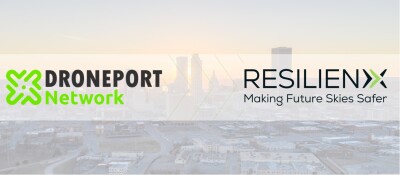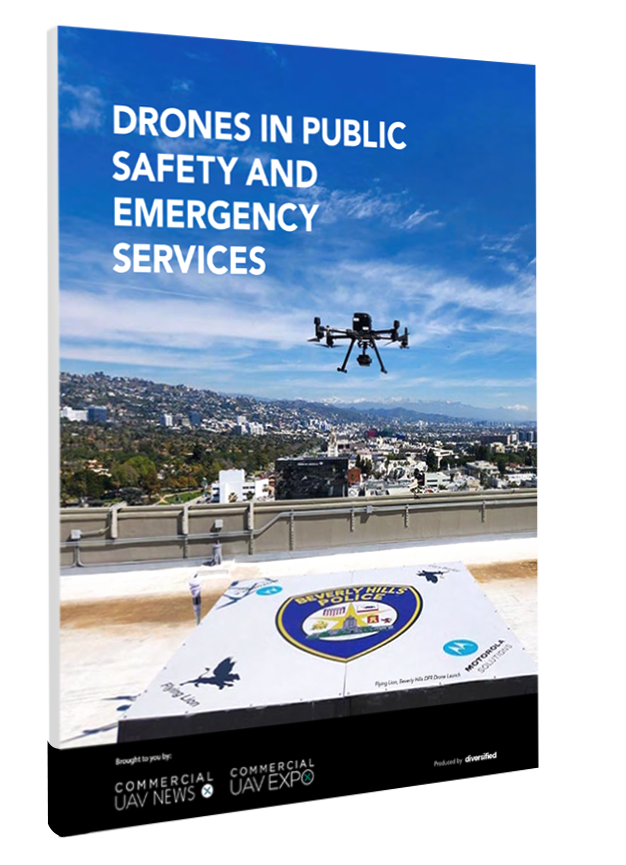By now we’ve all read about the attempt via drone to disrupt the U.S. power grid. This event has stoked existing concerns about the hazards of drone technology. But this event has also provided the drone industry with an opportunity to flip the script and illustrate the ways it is providing airspace awareness aimed at mitigating events like these. One of the most active voices on this subject in the industry is WhiteFox. Products such as their DroneFox Mobile Drone Detection System are already providing important data that helps stakeholders keep the airspace safe.
“In order for drones to be used for good, you have to be able to deconflict the airspace and that's really what our technology does: it provides awareness for people to react accordingly,” explained Bill Inman Director of Business Development at WhiteFox. “Our system capabilities include the detection of drones and the identification of their location and the location of the pilot in real time. It is very easy to use and to set up. Once someone purchases it, we give them some training, and they're off to the races—enabling quick and precise action when there is a potential threat.”
WhiteFox is providing public safety and security personnel with the tools to deconflict potentially dangerous situations by giving them a complete view of the drones that are operating at a given time within the airspace and a means to find out who is piloting them. They recently demonstrated what impact this technology can have at the Circuit of the Americas (COTA) Formula 1 event in Austin-Travis County. With their DroneFox Mobile Drone Detection System, they were able to detect 62 flights from 44 unique drones with 29 flights that were either on or close to COTA property.
For good reason, COTA does not allow drones to be flown over its facility. Apart from the obvious hazards of flying over a live event with thousands of people, there are the added risks of fast-moving cars on the ground and helicopters in the air capturing live footage. The facility itself also presents some unique challenges. It is a large site with multiple parking lots and points of entry and is located within the Austin-Bergstrom International Airport (ABIA) LAANC facility grid. Being so close to the airport, it is illegal to fly across much of the property without proper authorization. It is easy to imagine how an unauthorized drone entering this environment could put people and property at risk of a serious incident. Yet, it is incredibly difficult, if not impossible, to monitor the airspace without technological help.
“The Circuit of Americas Formula One event for the US Grand Prix is a huge event with 120-140K people attending,” explained Adam Johnson from Austin-Travis County EMS (retired) when asked what led them to investigate WhiteFox’s airspace awareness systems. “There has been a growing concern about how many aircraft are out there, the behavior of pilots, and the careless things that have been happening. It is important for us to be able to see and deconflict when we are out at an incident or event. In situations where there is manned aviation involved—such as at COTA where there was a helicopter providing aerial video footage of the event or when we need to utilize medivac services—having non-participating drones out there can interfere with critical/authorized manned aviation. If we see a drone, and we don’t know what its intentions are or where the operator is, that presents a safety challenge and can slow down the process of getting them onto the scene. We will actually have to wave them off until we can sort out the UAS.”
With 29 flights on and around COTA property, there were several concerning incidents that happened during the event.
“We had one experience during the race where the helicopter was in flight and there was a drone that launched in close proximity to its flight path at 250 above ground level (AGL). Where the helicopter was, the separation wouldn’t have been much, maybe 400 to 500 feet,” said Johnson when describing one of the most dangerous incidents that happened on COTA property during the event. “With DroneFox, we were able to identify the drone and tell COTA operations where the operator was. Security was then able to talk to the pilot to deescalate the situation.”
Johnson went on to explain that the drone was flying at a high altitude and wouldn’t have been easily visible in the sky, making this incident even more dangerous had there been no detection system on site.
“Just locating a drone in the sky without having some sort of reference point, like an airspace awareness system, can be difficult by itself, but even if you can see it, there’s no way to tie it back to the operator,” added Johnson.
Any one of the 29 drone operators at the event could have caused an accident, showing that we really can’t afford not to have airspace awareness technology. A visual observer might not have detected the drone flying around the helicopter, and even if they did, they most likely wouldn’t have found its operator, let alone detect and find the rest of the 29 operators at the event.
The number of incidents that the DroneFox system detected demonstrates just how congested our airspace is already becoming, especially around public arenas and events, and how many people are unaware of the risks involved with flying a drone in and around these spaces.
The biggest misconception from those outside the industry is that drones are a future problem — there aren’t enough people using them to warrant investment in airspace awareness technology. But this one event has shown that solutions for this issue are needed now. The clueless, careless, and criminal are already out there, and if left unattended, it is only a matter of time before something catastrophic happens. This is why investing in airspace awareness solutions, such as those that WhiteFox provides, is so important.















Comments